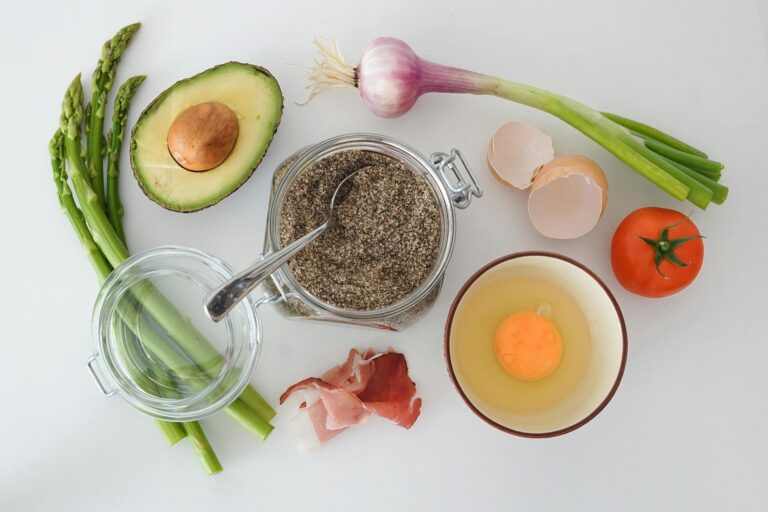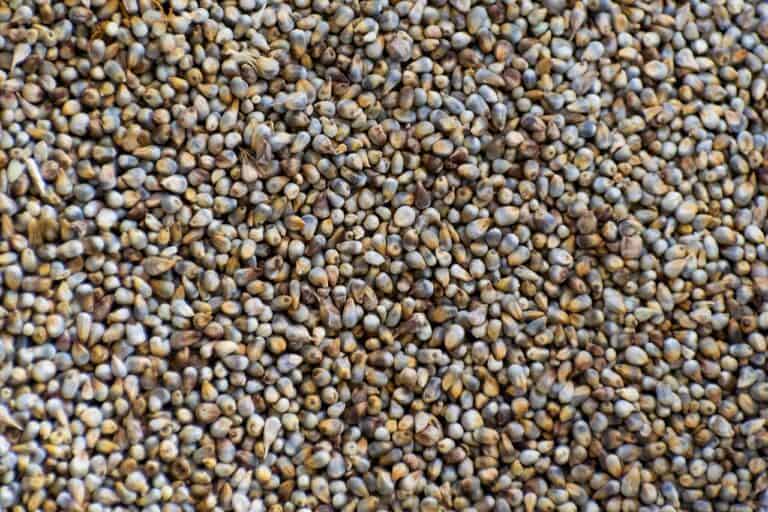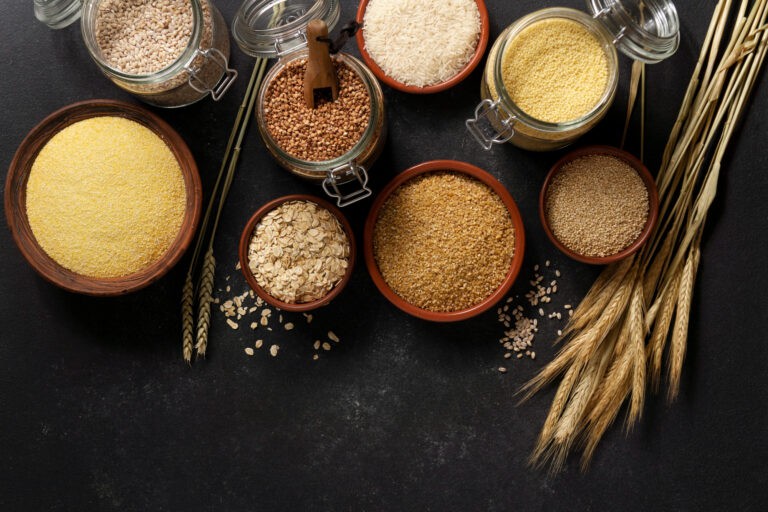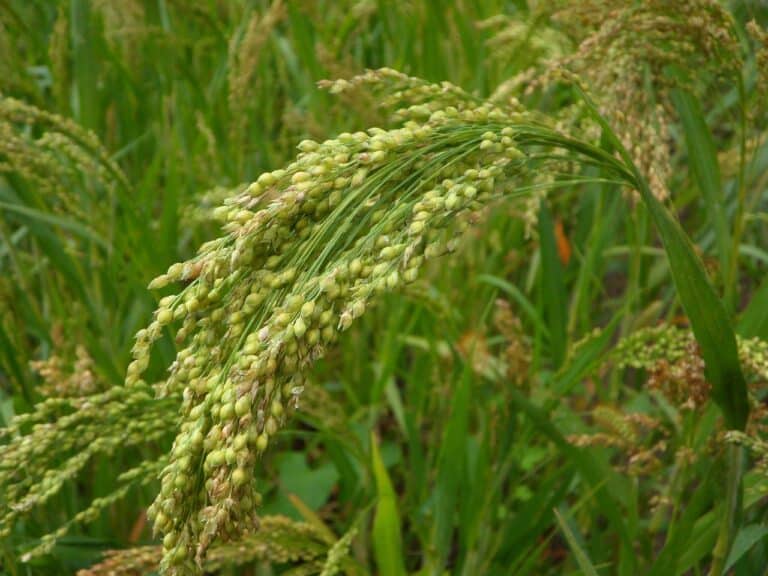Ragi, also known as finger millet, is packed with nutrition—but many people still wonder if it heats or cools the body. In this post, we’ll break it down in simple terms so you know exactly when and how to include ragi in your diet, whether it’s summer or winter.
Ragi is known for its natural cooling effect on the body, making it ideal for hot climates or summer diets. It supports digestion, provides calcium and iron, and helps you feel full longer. Whether cooked or sipped as a drink, ragi fits well into your daily routine year-round.
What is ragi?
Ragi is a staple food for many rural communities in Southern India and parts of East and Central Africa. It can grow from sea level up to the Himalayan hills but prefers well-drained, loamy soil. Karnataka produces about 60% of India’s finger millet, making up roughly one-third of the world’s supply. The plant is small and bushy, with finger-like seed heads. It grows between 30 and 150 cm tall, and its tiny seeds range in color from light brown to dark brown or white.
Nutrional Profile of Ragi
Ragi has high antioxidant activity and is one of the best sources of calcium. It’s rich in sulfur-containing amino acids, making it an ideal food for weaning babies.
| Nutrients | Value per 100 grams |
| Energy (Kcal) | 320 |
| Protein (g) | 7.2 |
| Carbohydrate (g) | 66.8 |
| Fat (g) | 1.9 |
Learn more about millets and its types with detailed nutritional value.
Benefits of ragi millet
- Helps lower blood sugar levels – Great for people managing diabetes.
- Promotes strong bones – Packed with calcium and supports bone health.
- Aids muscle repair – Supports recovery and tissue healing.
- Has natural antimicrobial properties – May help fight infections.
- Boosts skin and hair health – Rich in nutrients that support glow and strength.
- High in protein – Helps build and maintain muscle.
- High in iron – great choice for people with low hemoglobin levels, making it helpful in managing and preventing anemia. Boosts hemoglobin
- Rich in methionine (essential amino acid) – helps in fat metabolism
- Improves and eases constipation
- Heart protection & gut health – Ragi’s fiber, polyphenols, and magnesium support cholesterol balance, healthy gut bacteria, and reduced inflammation.
- Prevents osteoporosis, ideal for children and aging adults.
- Boosts lactation and is widely used in infant weaning foods.
when to eat ragi for weight loss
- Start your day with ragi porridge or ragi dosa for slow energy release preventing energy crashes and cravings for unhealthy snacks.
- Pre-dinner makes a light, filling meal that supports sleep and digestion.
when to avoid ragi
You may be wondering what are the side effects of ragi? Here’s the list:
- If you have kidney stones, its oxalate content may aggravate the issue.
- People with thyroid issues should consume in moderation due to goitrogens.
- High-fiber intolerance may cause bloating—start small and drink water.
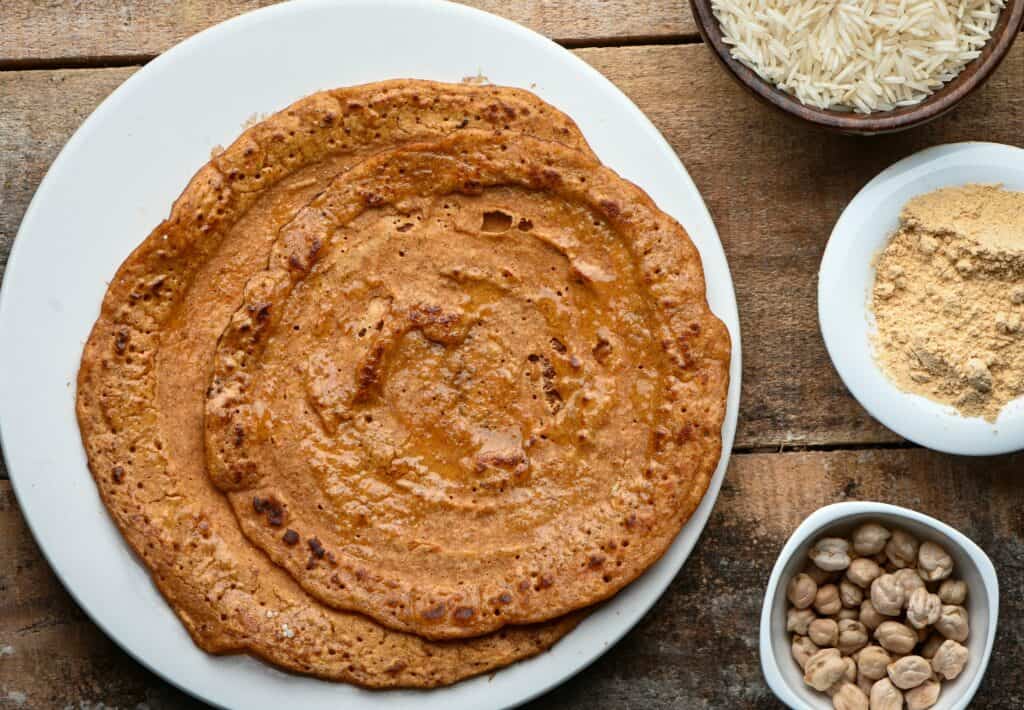
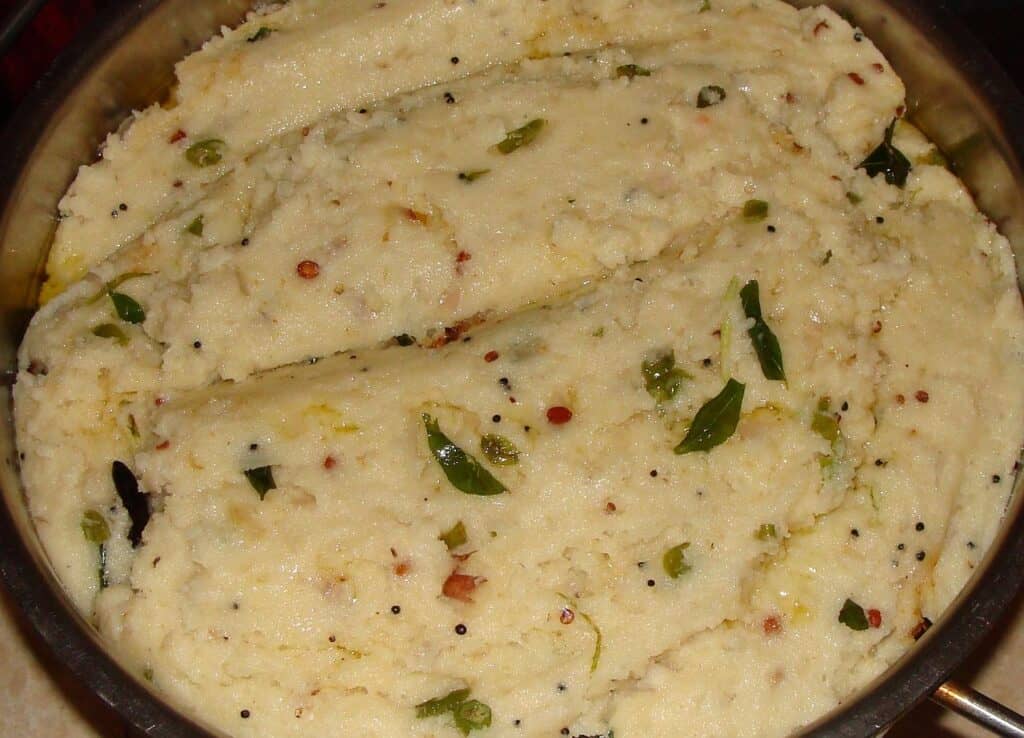
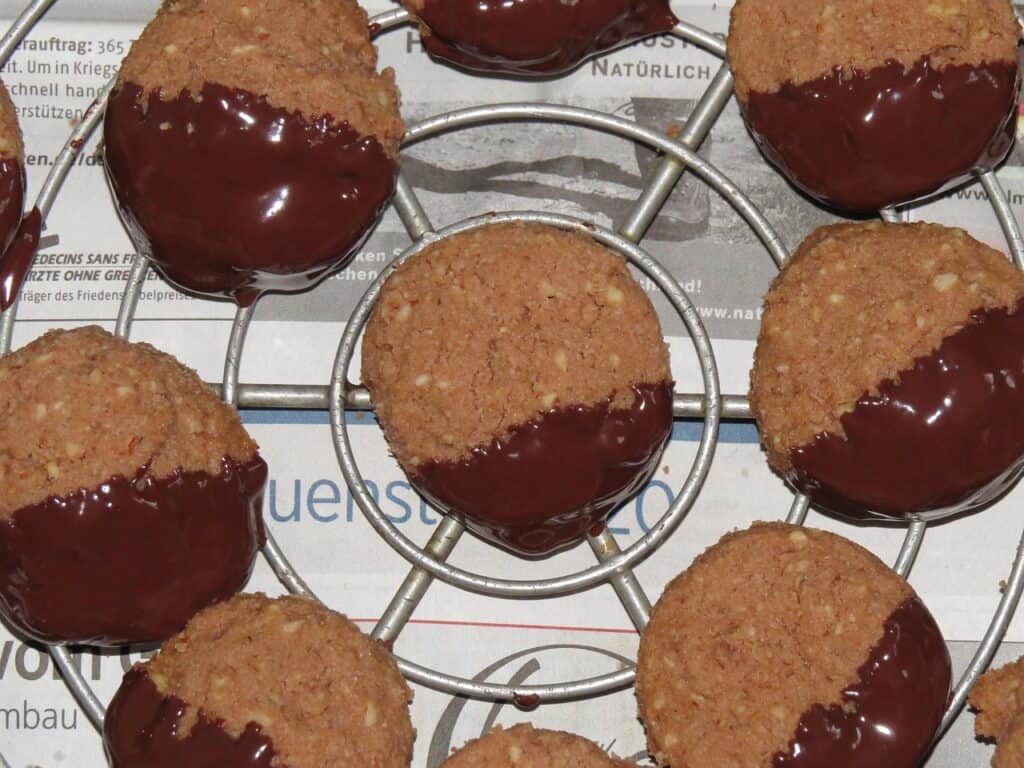

ragi vs other grains for weight loss
| Grain | Protein (per 100g) | Fibre (per 100g) | Calcium (per 100g) | Ease of Digestion | How It’s Commonly Used |
|---|---|---|---|---|---|
| Ragi | Moderate (7.2g) | High (11g) | Very High (344mg) | Excellent for Indian diets | Rotis, dosas, idlis, porridge |
| Oats | Moderately High (13.2g) | High (10g) | Low (54mg) | Good | Porridge, overnight oats, baked snacks |
| Brown Rice | Moderate (7.9g) | Moderately Low (3.5g) | Very Low (10mg) | Moderate | Boiled rice, pulao, grain bowls |
ragi recipes for weight loss
If you’re trying to lose weight, ragi fits right into your routine without much effort.
- Mix 25% ragi flour into your regular wheat flour to make rotis more filling and help you stay full longer.
- You can also roast ragi flour and stir it into soups or buttermilk. It blends in easily and quietly supports your weight loss goals.
FAQ
How to eat ragi?
It can be consumed as Roti, Dosas, Cheela, Cookies, Cakes, Porridges, Upma.
Is Ragi good for constipation?
Yes, ragi is generally good for relieving constipation thanks to its high fiber content. It contains both soluble and insoluble fiber, which helps soften stools and keep bowel movements regular. Just be sure to drink enough water, since fiber only works well when your body is properly hydrated.
Can ragi be taken with milk?
Yes, you can absolutely take ragi with milk. It’s a popular and nutritious combo, often used in porridge or warm drinks—especially for babies, kids, or anyone needing a healthy, easy-to-digest meal. You can enjoy it hot or cold, sweeten it with jaggery or honey, and even add nuts or spices for extra flavor.
How many spoons of ragi per day?
For most adults, 4 to 5 tablespoons of ragi flour per day—about 40 to 50 grams—is a healthy and balanced amount. It’s enough to get the benefits without overdoing it, especially when combined with a well-rounded diet.
Is ragi good for babies?
Yes, ragi is a great food for babies once they’re around six months old and ready to start solids. It’s rich in calcium, iron, and fiber—nutrients that support healthy growth, bone strength, and digestion during the early stages of development.
can we eat ragi at night?
Yes, you can eat ragi at night—especially if you’re looking for a light, filling, and healthy meal. It digests slowly, keeps you full, and won’t spike your blood sugar, making it a great option for dinner. Ragi dosa or ragi porridge are both excellent choices before bed.
can we eat ragi in summer?
Yes, ragi is a great summer food thanks to its natural cooling properties. It helps regulate body temperature, keeps you energized, and works best when paired with plenty of water. Enjoy ragi as a light porridge, ragi malt (cooling drink), or even in buttermilk-based recipes. Just make sure to stay hydrated, as ragi’s fiber content works best with plenty of water.
can we eat ragi in fast?
Yes, ragi can be eaten during a fast, depending on the fasting rules you follow. It’s a gluten-free grain rich in fiber, calcium, and iron—offering slow-digesting energy that keeps you full longer. Some fasts like Navratri may allow it, but always check if millets are permitted in your specific tradition.
which is better for weight loss ragi or jowar?
Both ragi and jowar are great for weight loss, but ragi may have a slight advantage thanks to its higher fiber and calcium content. Ragi helps you feel full longer and supports bone health, while jowar is also rich in fiber and easy to digest. The better choice depends on your taste, goals, and how your body responds.
are ragi and bajra same?
No, ragi and bajra are not the same—they’re two different types of millets. Ragi is finger millet, while bajra is pearl millet. They differ in taste, nutrition, and how they’re used in cooking, but both are healthy, gluten-free grains with unique benefits.
are ragi and madua same?
Yes, ragi and madua are the same—they’re both names for finger millet. “Ragi” is commonly used in South India, while “Madua” is the name used in Uttarakhand and parts of North India.
how to know if ragi is cooked?
To check if ragi is cooked, touch the mixture with wet fingers—it should feel firm, non-sticky, and form a smooth ball. The mixture also thickens as it cooks, and you might notice slight drying or browning at the bottom of the pan, which means it’s done.
what is ragi malt?
Ragi malt, also called Ragi Java or ragi porridge, is a healthy drink made from finger millet flour. It’s a popular Indian beverage known for its nutrition, easy digestion, and versatility—perfect for breakfast or a light snack.
can ragi cause gas?
Yes, ragi can cause gas and bloating for some people, especially if eaten in large amounts or if you have a sensitive stomach. Its high fiber content is great for digestion but can be hard to handle initially. Start with small portions and drink plenty of water to avoid discomfort.
Final thoughts
Ragi is a modern superfood—packed with calcium, fiber, protein, and antioxidants. It helps balance blood sugar, supports bones, enhances digestion, and can help with anemia. Just eat it in moderation, soak or sprout it, and watch how your body responds. It’s a simple swap that pays off in big health gains.


